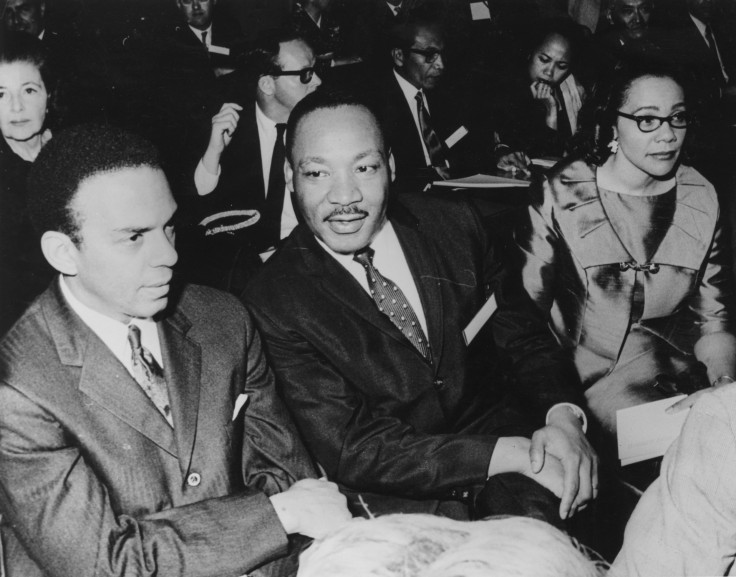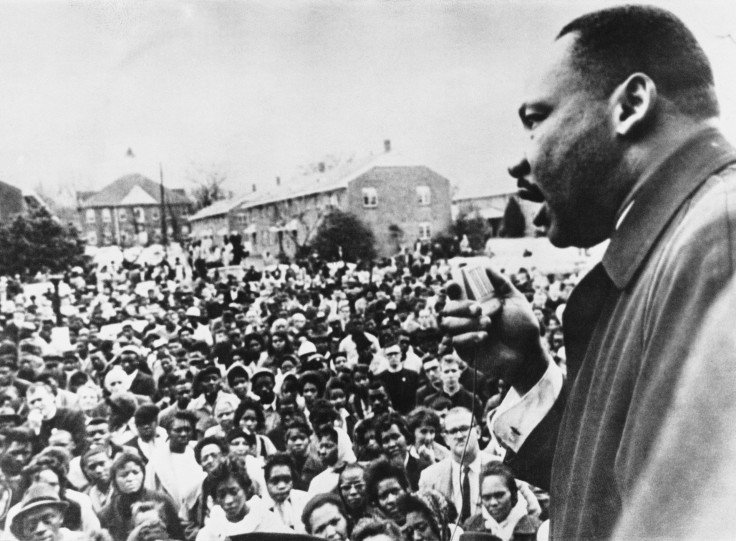A Martin Luther King Legacy Timeline, From His Rise To Untimely Death By Assassination

Nearly half a century after his assassination, Martin Luther King Jr. remains a symbol of social justice and nonviolent resistance as people across the nation observe the late civil rights leader's 88th birthday Monday.
King was born Michael King, Jr. on Jan. 15, 1929, to a college-educated Baptist family in Atlanta, Georgia. He grew up in a comfortable neighborhood sometimes called "Sweet Auburn" or "black Wall Street" for the prosperous African-American business community, according to Encyclopædia Brittanica.
But King was exposed to racism at a young age. It followed him in school and on the playground, and it influenced his worldview. At 15, King experienced a revelation while visiting Connecticut: He noted how white and black people frequently mixed together, unlike in the South where segregationist post-Civil War Jim Crow laws were still in place. The trip helped inspire King to later join the ministry, bringing along his progressive ideals with him in an attempt to get the religious community to take action against racist policies in the country.
It was at this time in his life that he met two figures that would prove extremely influential to the young preacher — his spiritual mentor, Morehouse College President Benjamin E. Mays, and Coretta Scott, an aspiring musician King met while studying at Boston College and married in 1953.
King's first major contribution to the civil rights movement came in 1955 in the wake of another historic event. Rosa Parks was arrested for refusing to give up her seat in the "colored section" of a city bus when white passengers demanded a place to sit rather than stand after the "white section" filled up. King, who had become pastor of the Dexter Avenue Baptist Church of Montgomery, led a 382-day citywide boycott of the buses. His success was furthered by the dismantling of the city's segregationist system under the Supreme Court's landmark Brown v. Board of Education ruling. He called on people across the nation to stage non-violent protests against institutionalized prejudice.
"We have no alternative but to protest. For many years we have shown an amazing patience. We have sometimes given our white brothers the feeling that we liked the way we were being treated. But we come here tonight to be saved from that patience that makes us patient with anything less than freedom and justice," King proclaimed at a demonstration, according to biography.com.

King's most iconic year was likely 1963. He was arrested for 13th time and wrote the famous "Letter from Birmingham Jail" during his imprisonment. The letter suggested that the "white moderate" was complicit in oppression against the African-American community for not taking action against radicals. Later that year, King led the historic march on Washington and delivered a 17-minute speech entitled "I Have A Dream," in which he imagined a future in which his children would "not be judged by the color of their skin, but by the content of their character." The following year, the Civil Rights Act of 1964 passed, codifying racial equality into the U.S. legal system, and, in 1965, King received the Nobel Peace Prize for his efforts.
He was not without enemies, though.
The U.S. government attempted to limit King's influence and even attempted to blackmail the charismatic preacher into killing himself at one point, the New York Times reported. King's advocacy for non-violence in the wake of clashes at demonstration in Selma, Alabama, also alienated some of his followers who embraced more militant black movements. In the end, it was a fugitive-turned-aspiring-pornography director-turned-white nationalist named James Earl Ray who shot King dead in 1968 at a rally in Tennessee.
King's legacy is often evoked today. Parks, buildings and murals bearing the iconic civil rights leader's name, words and likeness can be found across the U.S. and around the world in places such as Paris, Havana and the West Bank. When President Barack Obama became the first African-American president, he placed a bust of King in the Oval Office, according to ABC News. In 2011, King became the first non-political, non-military figure to be dedicated a memorial at the National Mall in Washington.
Once a designated enemy of the state, King has since been considered one of the most celebrated figures of U.S. history.
© Copyright IBTimes 2025. All rights reserved.






















